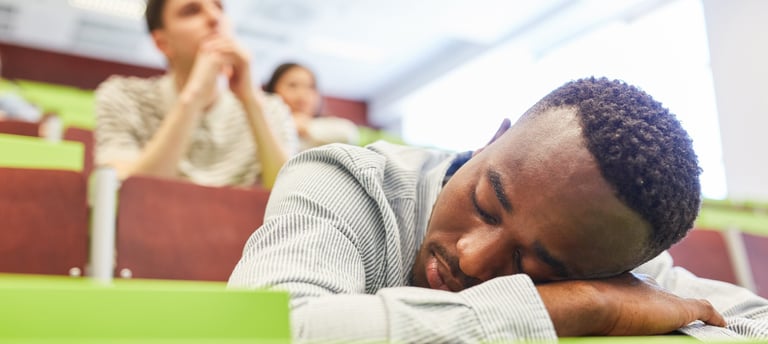By Alaina Coats
Updated April 14, 2025
Sleep routines for almost everybody have been out of whack for quite some time now. The pandemic has produced a lot of “night owls,” people sleeping in more during the day and less at night.
Popular virtual spaces like Zoom and Google Meet have spoiled adults and young people, causing many to succumb to laziness, resorting to completing their duties from the bedroom while still comfortably dressed in their pajamas. Now, with most of the country transitioning back to their normal in-person and school schedules, 60% of Americans say they are not ready.
According to Pew Research, most people feel that they’re able to better balance their work and personal life working from home. However, business analyst Carl Gould warns, “The longer you stay away from the office, the more that you are training your boss how they can live without you, he said in an interview with CBS Los Angeles.”
New York City Mayor Eric Adams told his city workers in an address, “You can’t stay home in your pajamas all day. In order for our economic — financial ecosystem...to function, we have to have human interaction... It can’t be done from home.”
Researchers say that young people will take the transition back to the classroom the hardest. And some may show signs of sleepiness during the daytime when they shouldn’t. Students who are sleep deprived may incur increased health problems like diabetes and obesity and perform poorly in school. While students who get adequate amounts of sleep most likely will not. Educators are encouraged to implement supportive activities to mitigate behavior changes and promote healthy routines for students.
Consistency will be key. Health experts say that parents should model healthy sleep habits for their kids, which promote relaxation and eventually assist with getting young people to fall asleep faster and eliminate tiredness during the day. Some tips include having a “media curfew” and dimming the lights in the evening. Young people and adults should be getting 8-10 hours of sleep per night, including on the weekends.
A California high school student told WBUR last school year that her school starts too early for her. “Because I have to get up so early, I’m still tired when I get home from school and end up falling asleep for three or four hours. Last month, California became the first state to pass legislation prohibiting schools from starting class before 8:00 a.m.
The American Academy of Pediatrics recommends middle and high school students start school at 8:30 a.m. or later, according to a report shared by the CDC. However, an estimated 75%-100% of schools in 42 states still start the school day before 8:30 a.m. According to the National Institutes of Health (NIH), sleep deprivation has become a growing problem all over the world and is a global epidemic that is hurting the economy.
When people are too sleepy, they tend to oversleep and miss work or school. Absences are the number one reason for work incompetency and hindered skill development. When absences occur, businesses and schools have to devote more money and time to personalized retraining sessions and after-school tutoring.
According to the NIH, the cost of insufficient sleep in the U.S. ranged from $299 billion to $433 billion in 2020. By the year 2030, it is predicted that the range will increase to $318 billion to $456 billion.



